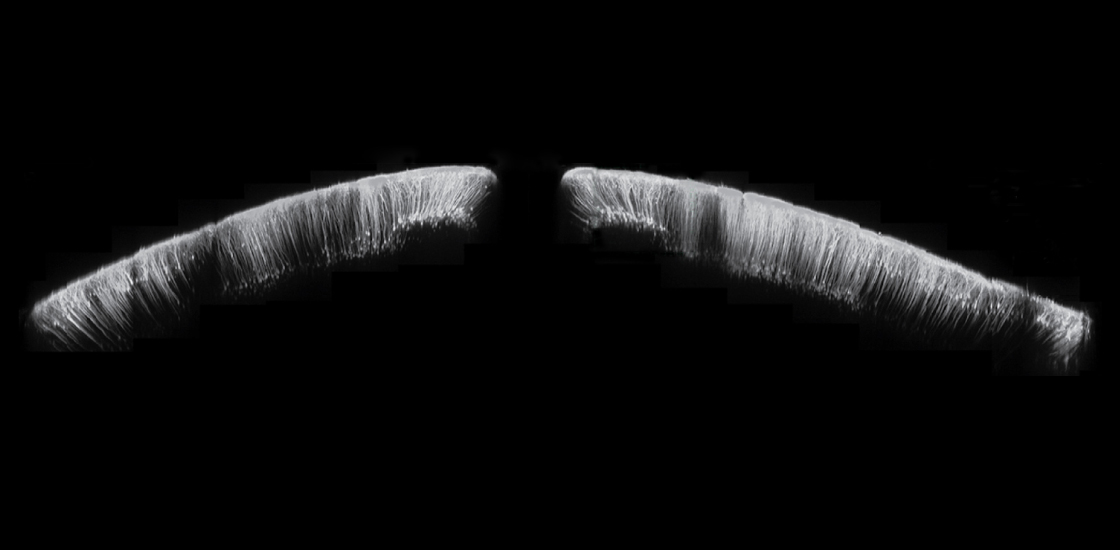‘Crystal skull’ provides panoramic view of mouse brain
A curved glass replacement for the top of a mouse’s skull lets researchers spy on the activity of more than 1 million neurons.
A curved glass replacement for the top of a mouse’s skull lets researchers spy on the activity of more than 1 million neurons1. The device, dubbed ‘the crystal skull,’ offers an unprecedented view of brain activity in living mice.
Scientists typically watch the brain in action by engineering mice with neurons that glow when they fire. They swap a small piece of skull for a glass window, which allows them to see the flickering of neuron chatter through a microscope.
But these windows are usually flat, and unless they are small, press against the brain’s curved surface and damage tissue. Researchers can sidestep this problem by thinning the skull until it is transparent. But even thinned bone can obscure the glow from neurons below.

The new trapezoid-shaped window, described 20 December in Cell Reports, is gently curved to reduce stress on the brain. It is 8 millimeters long and 10 millimeters wide — big enough to view up to 40 mouse brain regions at once.
Researchers implanted the window in 18 mice. They scored the outline of the window into the skull and gently lifted one side so they could slip the glass window underneath. This procedure minimizes brain swelling.
The team then removed the piece of skull, fixed the window in place with glue and allowed the animal to recover. They examined the brains of four of the mice for signs of injury and inflammation, and saw none.
The researchers then used a microscope to visualize brain activity through the window. They could capture only a section of the panoramic view at a time, so they stitched several separate images together.
The resulting picture shows up to 50,000 neurons in the outer layers of the brain. Using a microscope that reveals deeper regions of the brain, the researchers could observe up to 1.1 million active neurons. The windows remain clear for at least 11 weeks.
References:
- Kim T.H. et al. Cell Rep. 17, 3385-3394 (2016) PubMed
Recommended reading

Too much or too little brain synchrony may underlie autism subtypes

Developmental delay patterns differ with diagnosis; and more

Split gene therapy delivers promise in mice modeling Dravet syndrome
Explore more from The Transmitter

Noninvasive technologies can map and target human brain with unprecedented precision

During decision-making, brain shows multiple distinct subtypes of activity
